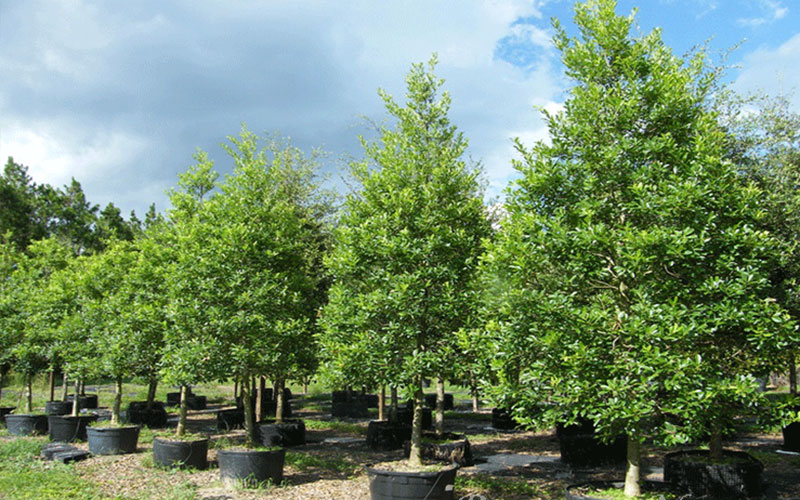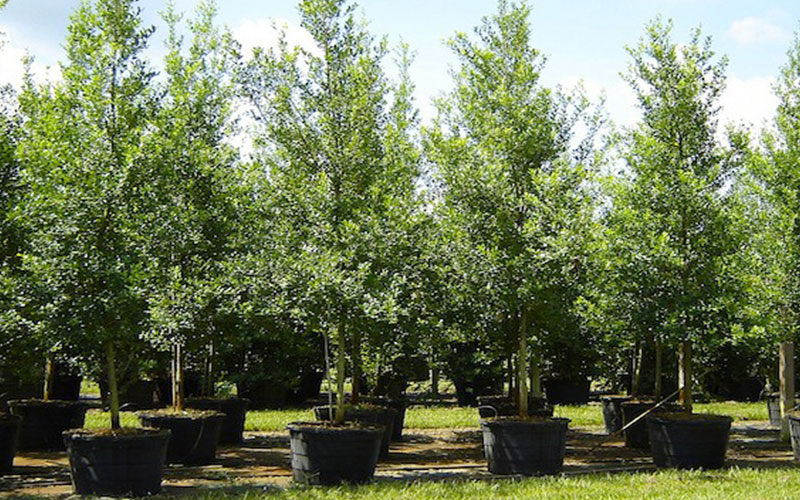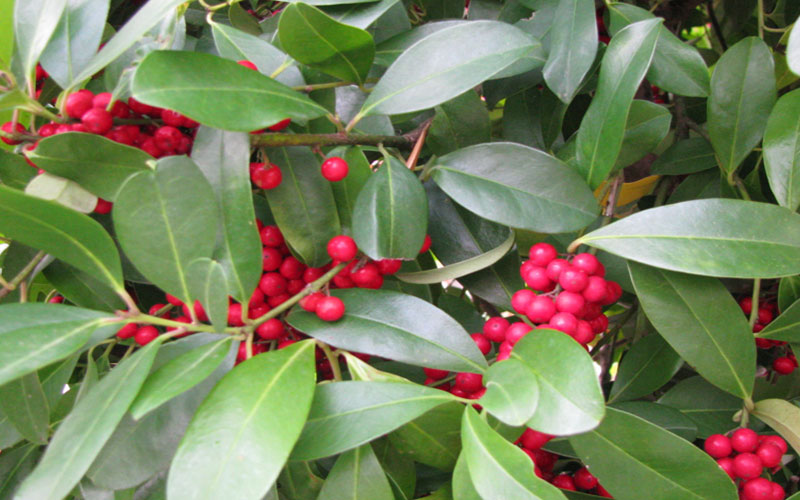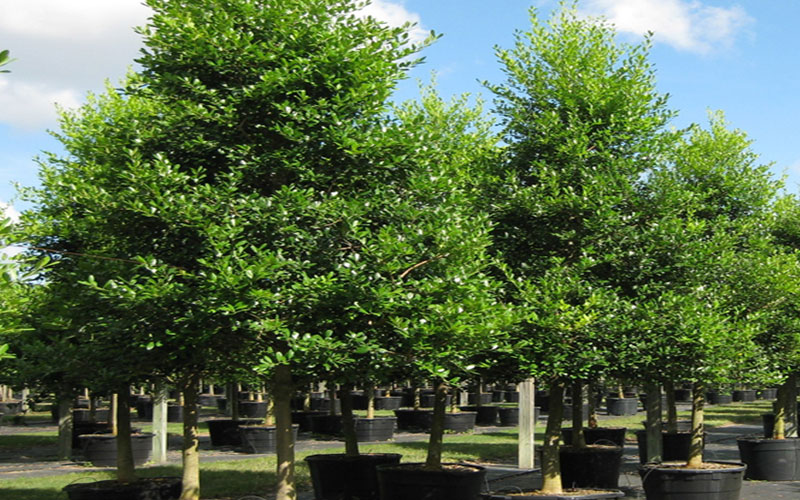Explore The DAHOON HOLLY TREE

It may seem odd to plant such an "up-North plant" in a subtropical landscape. But these naturally beautiful trees mix surprisingly well with the tropical foliage and bright flowers of South Florida. Hollies can be shrubby or tree like, shaped for a manicured appearance into teardrops, lollipops or even small shade trees. Or they can be left to grow naturally unclipped holly trees often have an attractive weepy look with full-to-the-ground foliage.
Learn More About The DAHOON HOLLY TREE
Planting Instructions
Dahoons can reach heights of 20 to 30 feet with a moderate growth rate. The beautiful bright green foliage looks its best when it's kept clipped for denser growth. This tree is moderately salt-tolerant, and it's cold hardy best in Zone 9B and cooler areas of Zone 10A. A dahoon needs regular irrigation and can take "wet feet," since its natural environment is swampy areas. It produces red berries but you'll need both male and female plants to produce them.
Plant Specs: A holly does best in full to part sun. All are cold tolerant and actually do best in Zone 9B, except for Nellie Stevens which can thrive in both Zones 9 and 10. The majority are slow to moderate growers yaupon holly is especially slow though some sources describe Nellie Stevens as moderate to fast. Ultimate size depends on each variety anywhere from 15 to 40 feet. These trees are evergreen, and all but dahoon are moderately drought-tolerant once they're well-established. The leaves of most are somewhat prickly these are hollies after all and the berries attract birds.
Plant Specs: A holly does best in full to part sun. All are cold tolerant and actually do best in Zone 9B, except for Nellie Stevens which can thrive in both Zones 9 and 10. The majority are slow to moderate growers yaupon holly is especially slow though some sources describe Nellie Stevens as moderate to fast. Ultimate size depends on each variety anywhere from 15 to 40 feet. These trees are evergreen, and all but dahoon are moderately drought-tolerant once they're well-established. The leaves of most are somewhat prickly these are hollies after all and the berries attract birds.
Plant Care Tips
Plant Care: Add top soil (or organic peat humus) and composted cow manure to the hole when you plant. No trimming is needed for most of these trees unless you want a specific shape. Don't go overboard with the trimmers, though no more than 2 or 3 times a year is best for the health of the tree.
Water on a regular basis with time between waterings for the soil to dry out a bit. Fertilize 3 times a year in spring, summer and autumn with a good granular fertilizer.
Water on a regular basis with time between waterings for the soil to dry out a bit. Fertilize 3 times a year in spring, summer and autumn with a good granular fertilizer.




